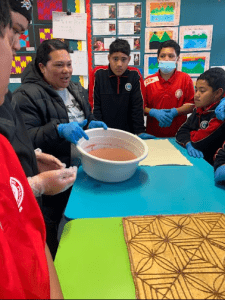| Name of the Plant |
Image of the plant |
Purpose |
| A: Adonis. |
|
The plant is a medicinal plant that contains a compound (glycoside Adonidin) that is used in the treatment of heart conditions. As one of the common names suggests this member of the Adonis genus flowers in the spring. |
| B:BANANA |
|
They contain essential nutrients that can have a protective impact on health. Eating bananas can help lower blood pressure and may reduce the risk of cancer. This article will take a look at the potential health benefits of bananas, such as improving heart health and promoting regularity. |
| C: CABBAGE |
|
That helps fill you up, so you eat less. It also keeps you regular, and it could help lower your “bad” (LDL) cholesterol and control your blood sugar. Cabbage also has nutrients that keep the lining of your stomach and intestines strong. |
| D: Daffodil |
|
Daffodil is a plant. The bulb, leaf, and flower are used to make medicine. People use daffodil for the common cold, swelling (inflammation) of the main airways in the lung (bronchitis), wound healing, and joint pain, but there is no good scientific evidence to support these uses. |
| E: EMMENOPTERYS |
|
Emmenopterys henryi is a species of flowering plant in the family Rubiaceae. It is found in the temperate parts of central and southern China and in Vietnam. It is a deciduous tree with opposite leaves and can attain heights of 45 m and grow to be 1000 years old. The epithet is named after the Irish botanist and sinologist Augustine Henry. The trees may not flower until they are 30–100 years old, and flowering seems to be triggered by a long hot summer. Many inflorescences are accompanied by a large white bract. |
| F:FABIANA |
|
The plants are employed as an antiseptic, anti-inflammatory (through infusions and decoctions), as well as to set broken bones using the resin exuding foliage and branches. European researchers have periodically studied the medicinal value of the plant since as early as 1877. |
| G:GAS PLANT. |
|
Gas plant is a herbaceous perennial with a woody base. It typically reaches 61–122 cm (2–4 feet) in height. The five-petaled flowers are borne in terminal racemes and produce dry star-shaped fruits. The compound leaves are glossy and can cause skin irritation in some people. |
| H: HEBE topiaria |
|
Left to grow naturally, Hebe topiaria forms a gracefully mounding specimen. Alternatively, several plants can be used to create an informal hedge. Take advantage of its cool, gray leaf tones and use this shrub in warm sunny spots. It combines well with Mediterranean plants and dwarf conifers. |
| I :ICE PLANT |
|
Ice plant is used in ascites (accumulation of fluid in the abdomen), dysentery, liver and kidney diseases and pneumonia. Used externally it relieves itching, pain, swelling and redness of the skin. |
| J:JACARANDA MIMOSIFOLIA |
|
Traditionally the flowers, leaves and bark are used to ease neuralgia and varicose veins. qualities that treat leukemia. Hot Jacaranda leaf baths treat wounds and skin infections and the tree also helps in the treatment of acne. |
| K:KALANCHOE |
|
Kalanchoe is a genus of the Family Crassulaceae. Various species of Kalanchoe are often referenced in folklore, and commonly used in traditional medicine worldwide for the treatment of fever, abscesses, bruises, contused wounds, coughs, skin diseases, infections, hypertension, rheumatism and inflammation |
| L:LADY PALM |
|
If you see spider mites around the leaves of this plant, make sure to wipe them out with the help of soapy water. They purify air from formaldehyde, ammonia, xylene, and carbon dioxide. These plants are not toxic to dogs or cats. |
| M:MADAGASCAR JASMINE |
|
The Jasmine plant is commonly used for bridal bouquets and wreaths. This is because of the small white attractive blooms which match the white wedding look needed, and the stems winding around wire hoops, create a perfect wreath. |
| N:NATAL PLUM |
|
In many areas the Natal plum is used as a hedge plant both for its fragrant white blossoms and as security which is provided by its dense foliage and large thorns. |
| O:OAK TREE |
|
The Oak tree is mostly just a tree but squirrels can eat its nuts also the wood is very sturdy and can be used for many things. |
| P:PACKERA |
|
Golden groundsel is a medicinal plant that is deserving of greater attention[4]. This species was widely used by N. American Indians to treat various complaints of the female reproductive system, and also to ease childbirth |
| Q:QUEEN ANNE’S LACE |
|
This plant gets the “wild carrot” name for a good reason. Queen Anne’s Lace and the carrots we eat today are related. The flower produces a carrot-like taproot, and in fact, modern (and much more delicious) carrots were originally developed from Queen Anne’s Lace; they were simply bred to produce a tastier root. |
| R:RADISH |
|
It Is used for food |
| S:SAGE |
|
People commonly use sage for memory and thinking skills, high cholesterol, and symptoms of menopause. It is also used for pain after surgery, lung cancer, sore throat, sunburn, and many other conditions, but there is no good scientific evidence to support these uses. |
| T:TALINUM |
|
The plant is useful for treating headaches, pneumonia, a surplus of urine, irregular menstruation, and vaginal discharge. The juice from the leaves is used to treat ulcers, and increase appetite. For its health benefits, Talinum paniculatum can induce sweating and also finds use as an enema for hemorrhoids. |
| U:Ulex |
|
Gorse flowers are edible and can be used in salads and tea and to make a non-grape-based fruit wine. As fodder gorse is high in protein it may be used as feed for livestock, particularly in winter when other greenstuff is not available. |
| V:VACCINIUM |
|
Ecology. Vaccinium species are used as food plants by the larvae of a number of Lepidoptera (butterfly and moth) species – see list of Lepidoptera that feed on Vaccinium. Berries of North American species nourish a variety of mammals and birds, notably including the grizzly bear |
| W:WALNUTS |
|
Both trees are cultivated worldwide for their nuts and their high quality timber, which is widely used in furniture, car interiors, doors and the gun industry. However, we can say that English walnuts are cultivated more for nuts and less for timber. |
| X:Xerochrysum |
|
It is also a great container plant. The flowers are great for floral work, and can also be dried for long lasting flowers that don’t need water. |
| Y:YARROW |
|
Yarrow has long been used to treat digestive issues like ulcers and irritable bowel syndrome (IBS), symptoms of which include stomach pain, diarrhea, bloating, and constipation. In fact, this herb contains several flavonoids and alkaloids, which are plant compounds known to relieve digestive complaints |
| Z:ZAMIA |
|
The ZZ plant has air purifying qualities for the indoor environment. A Study from the University of Copenhagen from 2014 shows the plant is able to remove volatile organic compounds in this order of effectiveness, benzene, toluene, ethylbenzene and xylene. |

